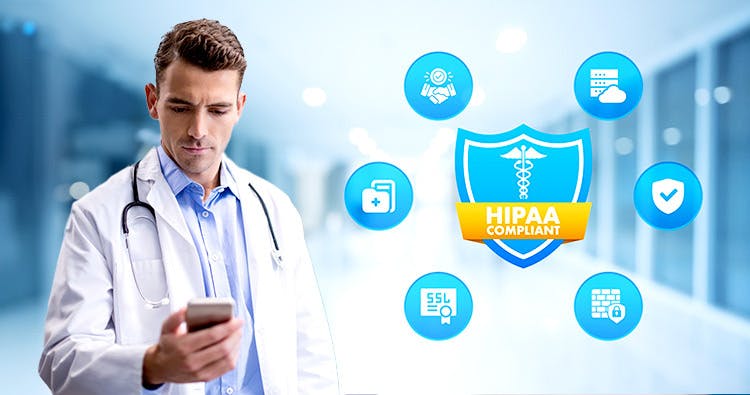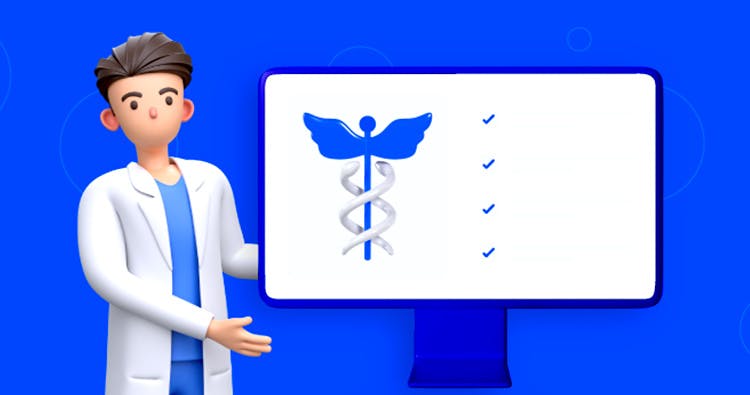Introduction
If you’re venturing into healthcare software development, especially if your application deals with protected health information (PHI), ensuring it complies with HIPAA regulations should be your top priority. In this blog, we’ll delve into what HIPAA compliance means, why it matters, and provide a checklist to guide you in developing HIPAA-compliant software.
What is HIPAA Compliance?
The Health Insurance Portability and Accountability Act (HIPAA) of 1996 is a cornerstone of healthcare data privacy in the United States. It's a federal law that mandates how healthcare providers, health plans, and other entities ("covered entities") handle a specific category of data: Protected Health Information (PHI). PHI encompasses a wide range of details about an individual's health, including medical history, diagnoses, treatment plans, and even billing information.
HIPAA compliance goes beyond simply keeping this data confidential. It enforces a set of security standards to safeguard PHI from unauthorized access, disclosure, or misuse. This includes measures like encryption, access controls, and regular security audits. Furthermore, HIPAA dictates how covered entities can use and disclose PHI. Patients have the right to access their medical records and control how their information is shared. HIPAA ensures transparency and empowers individuals with their health data.
Why Should Your Healthcare App Be HIPAA-Compliant?

- Avoid Penalties and Reputation Damage: Failure to be HIPAA-compliant may result in heavy penalties and damage to your brand reputation. By adhering to HIPAA guidelines, you can prevent unauthorized access, use, or disclosure of PHI.
- Build Trust with Patients: Complying with HIPAA regulations demonstrates that you take patient privacy seriously. It helps build trust with patients who want assurance that their health information is secure.
- Expand Your Customer Base: Some healthcare providers and payers may only work with app developers that are HIPAA compliant. Becoming compliant can expand your potential customer base and increase revenue opportunities.
- Avoid Heavy Penalties: Developing a HIPAA-compliant app can save you from hefty fines. It’s a proactive step to protect your business.
Understanding the HIPAA Framework
HIPAA comprises three core rules:
- Privacy Rule: Defines standards for handling and disclosing PHI.
- Security Rule: Outlines safeguards to protect the confidentiality, integrity, and availability of electronic PHI (ePHI).
- Breach Notification Rule: Mandates specific procedures to notify individuals and authorities in case of a data breach.
Which Healthcare Apps Should Comply with HIPAA Rules?

Before diving into the checklist, let’s clarify which healthcare apps need to comply with HIPAA:
- Apps Handling PHI: If your app deals with electronically protected health information (ePHI), such as patient records, lab results, or medical images, it falls under HIPAA regulations.
- Entities Using the Application: Consider the type of entity that will use your application. If it’s a healthcare provider, payer, or any organization handling PHI, HIPAA compliance is crucial.
HIPAA-Compliant Software Development Checklist

Here’s a concise checklist to guide you in developing HIPAA-compliant software:
1. User Authorization (Robust & Granular Controls)
- Multi-Factor Authentication (MFA): Implement MFA beyond passwords for critical systems and access points. This could include fingerprint scanning, security tokens, or one-time codes.
- Role-Based Access Control (RBAC): Define user roles with specific permissions based on their job functions. This minimizes access to PHI by granting only the information necessary for each role.
- Least Privilege Principle: Grant users the minimum level of access required to fulfill their duties. Avoid granting broad access privileges to sensitive data.
- Session Management: Implement session timeouts and inactivity controls to automatically log users out after a predetermined period of inactivity.
- Regular User Access Reviews: Conduct periodic reviews of user access privileges to ensure continued alignment with current job responsibilities and minimize the risk of unauthorized access due to role changes or employee departures.
2. Remediation Plan (Detailed & Actionable)
- Incident Response Procedures: Outline clear steps for identifying, containing, and mitigating security breaches. Define roles and responsibilities for team members to ensure a coordinated and timely response.
- Data Breach Notification Plan: Establish procedures for notifying affected individuals, the Department of Health and Human Services (HHS), and covered entities (if applicable) within the mandated timeframe based on the breach severity.
- Root Cause Analysis: After a security breach, conduct a thorough investigation to identify the root cause. This analysis helps prevent similar incidents in the future.
- Plan Testing & Updates: Regularly test your remediation plan through simulated scenarios. Update the plan to reflect changes in technology, regulations, and internal procedures.
3. Emergency Mode (Preparedness & Efficiency)
- Dedicated Security Team: Assemble a team with expertise in cybersecurity and HIPAA regulations. This team should be responsible for handling emergencies, incident response, and ongoing security monitoring.
- Communication Protocols: Establish clear communication protocols within the team and with external stakeholders (authorities, affected individuals) during emergencies.
- Data Recovery & System Restoration: Develop well-documented procedures for restoring critical systems and retrieving backed-up data in case of an outage or security breach.
- Business Continuity Plan: Integration of the emergency mode response plan with a larger business continuity plan helps ensure continued operations in the event of a critical incident.
4. Authorization Monitoring (Continuous Vigilance)
- Access Logs & User Activity Monitoring: Implement tools to track user access attempts, successful logins, and user activity within the system. Analyze these logs for anomalous behavior that might indicate unauthorized attempts or suspicious activity.
- Alert Systems: Configure automatic alerts to notify security personnel when suspicious activities are detected, allowing for immediate investigation and response.
- User Access Reviews (Expanded): In addition to periodic reviews, consider conducting random audits of user access logs to identify potential misuse or unauthorized access.
5. Data Backup (Security & Reliability)
- Encryption at Rest and in Transit: Encrypt PHI data both at rest (on storage devices) and in transit (over networks) using industry-standard encryption algorithms. This ensures data confidentiality even if intercepted by unauthorized parties.
- Backup Frequency & Locations: Establish a regular backup schedule based on the sensitivity of the data and potential data loss tolerance. Store backups in geographically separate locations to minimize the risk of data loss due to natural disasters or physical attacks.
- Data Restoration Testing: Regularly test data restoration procedures to ensure they function correctly and can restore backed-up data efficiently in case of a disaster or system failure.
- Data Retention & Disposal Policies: Develop clear policies regarding data retention periods and secure data disposal procedures. Regularly purge outdated or unnecessary PHI data to minimize the risk of exposure.
6. Additional Considerations
- Secure Coding Practices: Follow secure coding guidelines to minimize vulnerabilities in the software development process. Employ code reviews and static code analysis tools to identify potential security flaws.
- Penetration Testing & Vulnerability Assessments: Regularly conduct penetration testing and vulnerability assessments to identify potential weaknesses in your system and implement necessary patches or updates.
- Employee Training & Awareness: Conduct ongoing training programs for your staff on HIPAA requirements, security best practices, and how to identify and report suspicious activity.
- System Logging & Auditing: Implement comprehensive logging and auditing functionalities to track system events, user actions, and data access attempts. This allows for forensic analysis after security breaches and facilitates compliance audits.
Remember that HIPAA compliance is an ongoing process. Regular audits, risk assessments, and staff training are essential to maintaining compliance.
Conclusion
Developing HIPAA-compliant software requires a holistic approach that integrates technical controls, policies, and procedures to safeguard patient data. By following this checklist and staying updated with the latest regulatory changes and technological advancements, software developers can build secure healthcare applications that meet HIPAA standards and contribute to improved patient care and data protection in 2024 and beyond.
Remember, compliance is an ongoing commitment. Stay vigilant and prioritize data privacy and security in every aspect of your software development lifecycle



